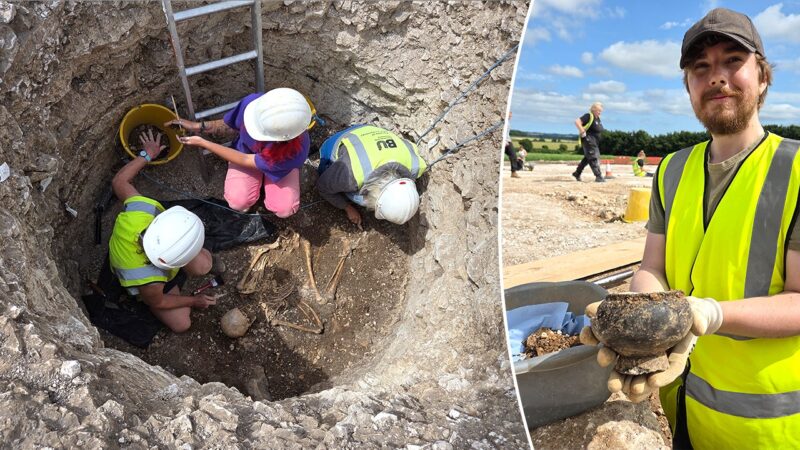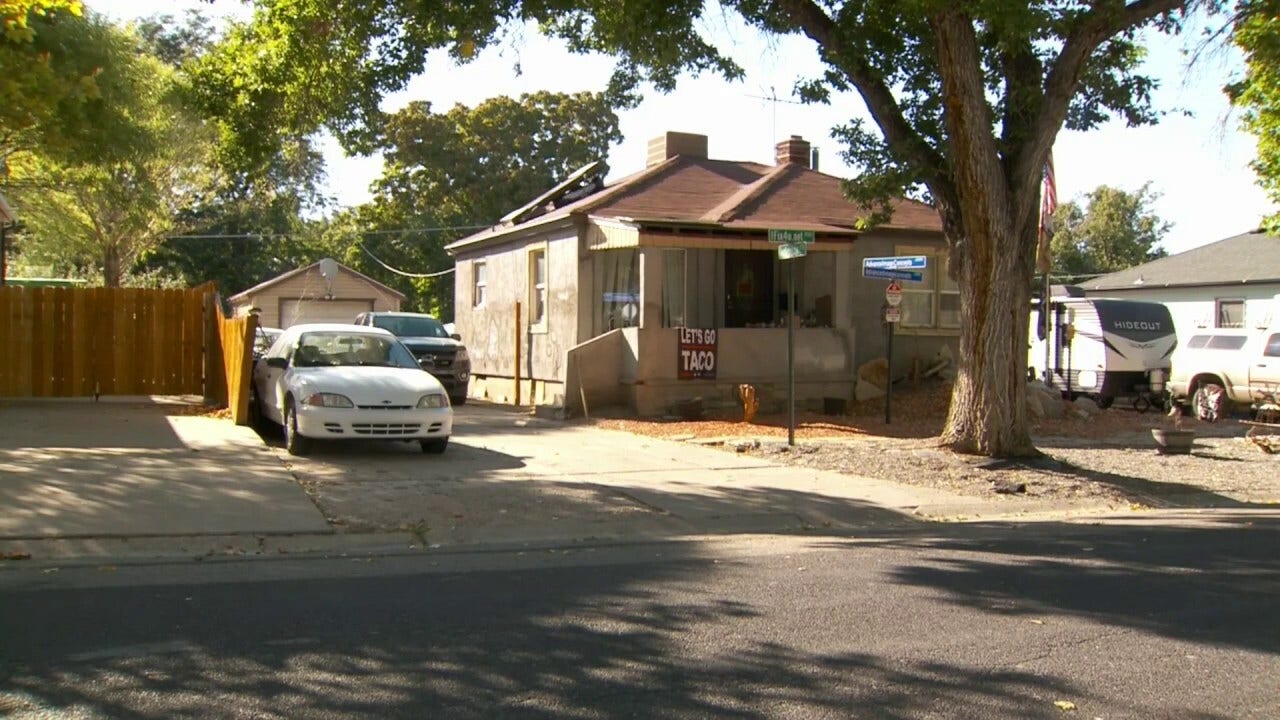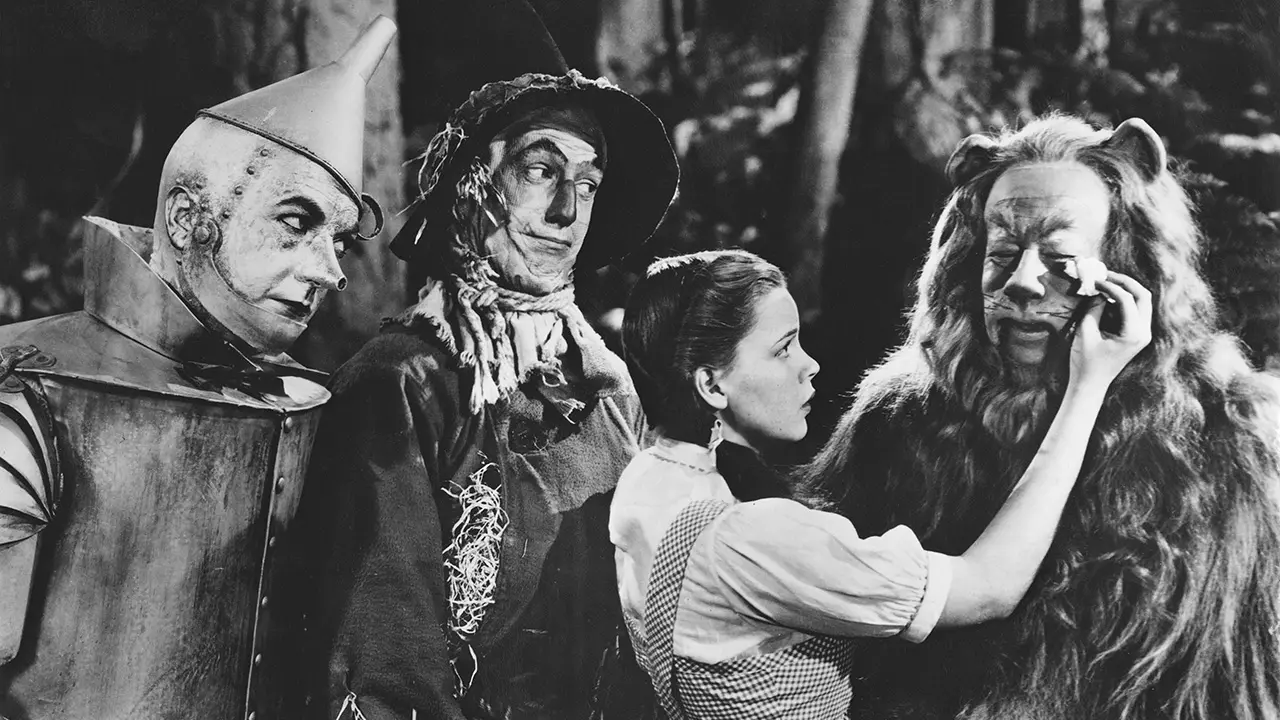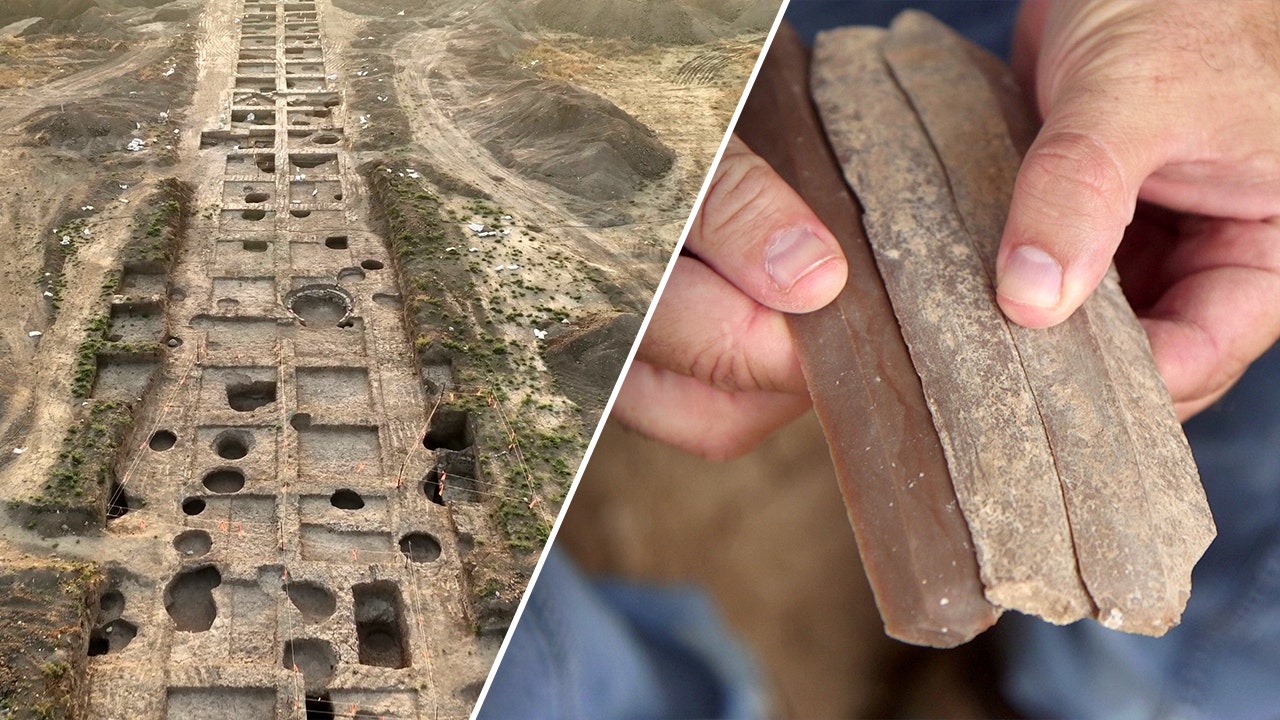NEWYou can now listen to Fox News articles!
Archaeologists uncovered a 2,000-year-old murder mystery while filming a television show in the United Kingdom — one that raises more questions than answers.
Bournemouth University announced the discovery, which involved Channel 4 host Sandi Toksvig, in late October. The excavation was part of a new series called “Sandi Toksvig’s Hidden Wonders.”
Toksvig, who studied archaeology at the University of Cambridge, joined the archaeological excavation centered around a 2,000-year-old Iron Age settlement in Dorset.
The settlement belonged to the Durotriges, a tribe that lived in rural Dorset before the Roman conquest.
WARRIORS FOUND STACKED IN ANCIENT WELL REVEAL VIOLENT TALE OF BATTLEFIELD DEFEAT: ARCHAEOLOGISTS

Archaeologists in Dorset unearthed a 2,000-year-old Iron Age burial site while filming a Channel 4 documentary with Sandi Toksvig. (Bournemouth University)
At the site, archaeologists uncovered artifacts from daily life in Iron Age Britain, including bronze brooches, a bone comb and a bangle made of bronze.
Then, during filming, the team was surprised to find a skeleton buried face down in a pit — a teenage girl who was likely murdered as part of a human sacrifice.
CLICK HERE TO SIGN UP FOR OUR LIFESTYLE NEWSLETTER
Most skeletons at the site were carefully placed in formal burials with grave goods, typically pots or brooches.
The girl’s body was tangled and face-down with no such offerings, a stark contrast to the other burials in the settlement.

The girl’s body was found face down and tangled, unlike the formal burials discovered nearby. (Bournemouth University)
In the Bournemouth University release, excavation leader Miles Russell said that the team was “particularly shocked to hear that this could have been a human sacrifice.”
CLICK HERE FOR MORE LIFESTYLE STORIES
“It was obvious from Sandi’s own interest in archaeology that she was deeply moved by what had been uncovered,” the researcher added.
Speaking to Fox News Digital, Russell said that the fact the girl was buried face-down “does suggest marked disrespect.”

Archaeologists found a variety of artifacts at the ancient settlement, along with the teenager’s skeleton. (Bournemouth University)
He added that the condition of the teen’s muscle attachments and intervertebral discs suggests that she performed hard manual labor and lifted heavy weights throughout her life.
“This seems to indicate that the pit burials were at the lower end of society, possibly representing the enslaved or prisoners of war,” Russell noted.
TEST YOURSELF WITH OUR LATEST LIFESTYLE QUIZ
The victim also had an unhealed wrist fracture, which suggests she was defending herself at the time of her death.
Her wrists appeared to have been tied as well, which indicates “sacrifice, or at least deliberate execution,” Russell said.

“This seems to indicate that the pit burials were at the lower end of society, possibly representing the enslaved or prisoners of war,” Russell said. (Bournemouth University)
“It’s really a case of archaeological evidence supporting the Roman view that, not only did human sacrifice occur in Iron Age, pre-Roman Britain, but that it happened a lot,” the archaeologist concluded.
CLICK HERE TO GET THE FOX NEWS APP
“What we’re trying to do now is to ascertain who the victims were, regarding status and position, and why they were selected for such a fate, effectively giving back their voice.”








